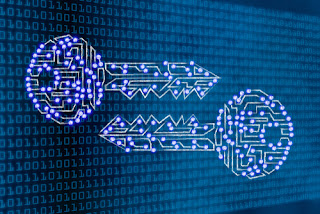What is Quantum Cryptography?
Quantum cryptography is an advanced approach to secure communication that leverages the principles of quantum mechanics to encrypt and transmit data. Unlike conventional cryptography, which relies on mathematical algorithms to safeguard data, quantum cryptography utilizes the unique properties of quantum particles, such as photons, to secure information. The most well-known application of quantum cryptography is Quantum Key Distribution (QKD), a method for exchanging encryption keys securely between two parties.
The Basics of Quantum Mechanics
To understand how quantum cryptography works, it's essential to grasp some fundamental concepts of quantum mechanics. Quantum mechanics is a branch of physics that describes the behavior of matter and energy at atomic and subatomic levels. Some key principles of quantum mechanics that contribute to quantum cryptography are:
- Superposition: Quantum particles can exist in multiple states simultaneously until they are measured. Upon measurement, the particle collapses into one specific state.
- Entanglement: Two quantum particles can be connected in such a way that the state of one particle instantly affects the state of the other, no matter the distance between them.
- 3No-Cloning Theorem: It is impossible to create an identical copy of an unknown quantum state.
How Does Quantum Cryptography Work?
In quantum cryptography, particularly in QKD, these principles are harnessed to create a secure communication channel between two parties, usually referred to as Alice and Bob. Here's an overview of the process:
1. Alice generates a random sequence of bits and encodes each bit onto individual photons using specific quantum states.
2. Alice sends these photons to Bob through a secure quantum channel, such as an optical fiber.
3. Bob measures the photons using randomly chosen detectors, collapsing them into specific states and obtaining a bit sequence.
4. Alice and Bob communicate through a public channel to compare and correct their sequences, ultimately agreeing on a shared encryption key.
The security of this process lies in the fact that any eavesdropper, commonly called Eve, attempting to intercept and measure the photons will inevitably disturb their quantum states. This disturbance can be detected by Alice and Bob, alerting them to the presence of an eavesdropper and allowing them to discard the compromised key.
How Secure Is Quantum Cryptography?
Quantum cryptography offers a level of security that surpasses traditional cryptographic methods in several ways:
- Unconditional Security: The security of QKD is based on the fundamental laws of physics rather than the assumed hardness of mathematical problems. This makes the encryption keys generated through QKD unconditionally secure, as they cannot be broken by any computational advancements or algorithmic breakthroughs.
- Future-Proof: Quantum cryptography is resistant to attacks from quantum computers, which pose a significant threat to conventional cryptographic systems. Quantum computers could potentially break widely-used encryption algorithms like RSA and AES in a matter of minutes, whereas quantum cryptography remains secure.
- Tamper-Proof: Any attempt to eavesdrop on a quantum communication channel will introduce disturbances that can be detected by the legitimate parties. This ensures that the encrypted data remains secure even in the presence of an eavesdropper.
However, it's important to note that quantum cryptography is not without its challenges. Practical implementation of QKD systems is complex and requires specialized equipment, such as single-photon detectors and quantum channels. Additionally, the transmission distance for quantum communication is currently limited, although researchers are continually working on extending this range.
## Conclusion
Quantum cryptography is a revolutionary approach to secure communication that offers unparalleled security based on the principles of quantum mechanics. While there are still practical limitations to overcome, quantum cryptography holds immense potential to reshape the future of information security and safeguard sensitive data against emerging threats. As technology continues to advance, it's crucial for businesses and individuals to stay informed about the latest developments in quantum cryptography to ensure the highest level of data protection.


Post a Comment